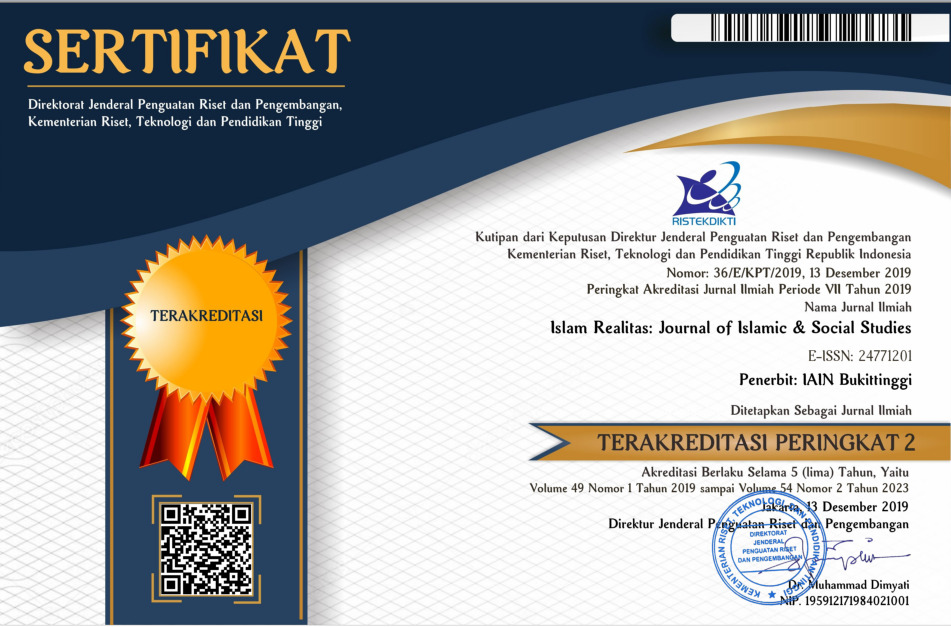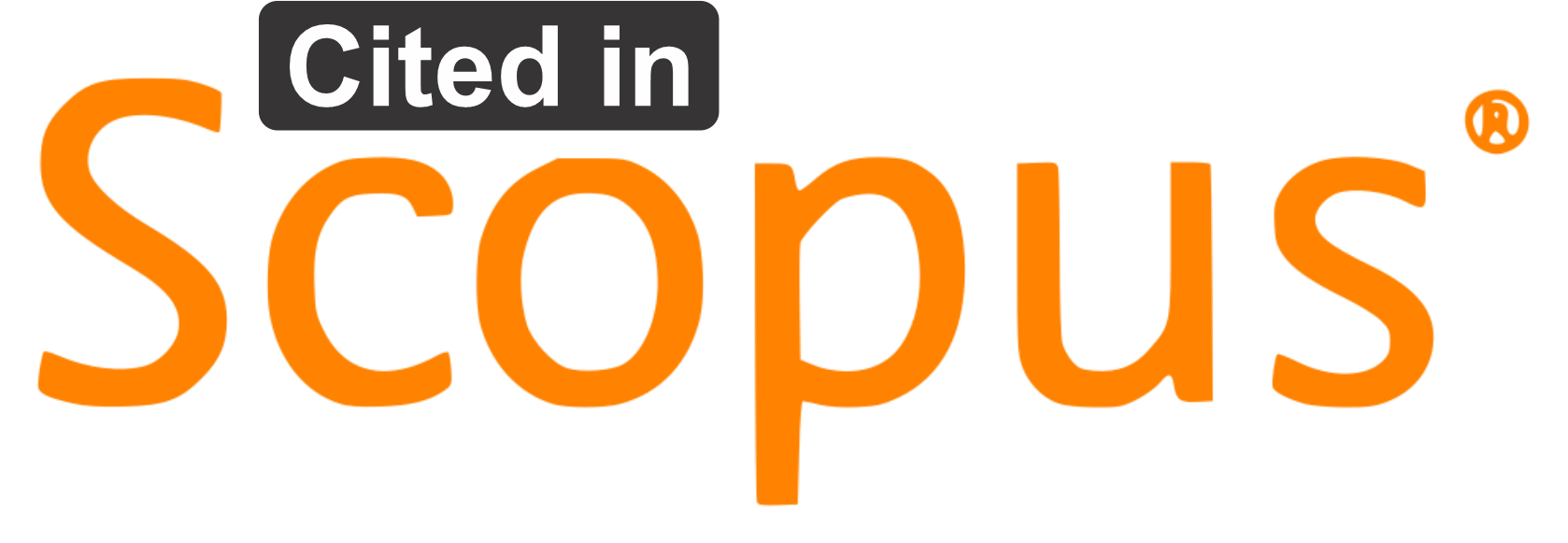KONTRIBUSI BPRS DALAM MEREALISASI FINANCIAL INCLUSION DI PEDESAAN: EVALUASI EMPIRIS DAN PENGUATAN STRATEGI
Downloads
Islamic Rural Banking (populer as BPRS in Indonesia) is a kind of banking which conducts finance and loan especially in rural area. This monetary institution focuses to main function as a bank which gives the service to small and micro enterprises and based on Islamic principles in their operational system. By providing the fund to productive sectors, the economics will be tough and more competitive. That is why, this rural bank is also called “community bankâ€. In supporting financial inclusion -a concept where each person has a full access to monetary service, with competitive cost, convenience and prestige- the contribution of these community banks have really existed. On the other hand, the optimalization of this contribution process constraints to many things that covers internal and external problem. The finding of research recommends some strategies to improve the role of community bank in supporting financial inclusion in rural area, such as: reinforcement in regulation’s strategy, socialization’s strategy, competition’s strategy and human resource’s strategy
Islamic Rural Banking (populer digunakan sebagai BPRS di Indonesia) adalah jenis perbankan yang melakukan pembiayaan dan pinjaman terutama di daerah pedesaan. Lembaga keuangan ini berfokus pada fungsi utama sebagai bank yang memberikan layanan untuk usaha kecil dan mikro dan berdasarkan prinsip-prinsip Islam dalam sistem operasional mereka. Dengan memberikan dana ke sektor produktif, ekonomi akan sulit dan lebih kompetitif. Itu sebabnya, BPR ini juga disebut "Bank masyarakat". Dalam mendukung inklusi keuangan, konsep di mana setiap orang memiliki akses penuh ke layanan keuangan, dengan biaya yang kompetitif, kemudahan dan prestige- kontribusi bank komunitas ini telah benar-benar ada. Di sisi lain, optimalisasi kontribusi ini kendala proses untuk banyak hal yang mencakup masalah internal dan eksternal. Temuan penelitian merekomendasikan beberapa strategi untuk meningkatkan peran bank masyarakat dalam mendukung inklusi keuangan di daerah pedesaan, seperti: penguatan dalam strategi regulasi, strategi sosialisasi, strategi persaingan dan strategi sumber daya manusia.Buku Teks
Basri, Ikhwan Abidin, (1989), Islam dan Ekonomi Pembangunan. Judul Asli: Islam and Economic Development oleh Umer Chapra, Jakarta : Gema Insani.
H.A. Djazuli, (2002), Lembaga-lembaga Perekonomian Umat (Sebuah Pengenalan) ,Jakarta: PT RajaGrafindo Persada.
Herri dkk, (2013), Studi Peningkatan Peran Bank Perkreditan Rakyat (BPR) dalam Pembiayaan Usaha Mikro Kecil (UMK) di Sumatera Barat. Jakarta: Publikasi Bank Indonesia.
Huda Nurul (ed), (2012), Current Issues Lembaga Keuangan Syariah. IAEI. Penerbit: Kencana Prenada Media Group.
Karnaen A Perwataadmadja dan Hendri Tanjung, (2007), Bank Syariah: Teori Praktik dan Peranannya. Jakarta: Celestial Publishing.
Marsuki, (2006), Pemikiran dan Strategi Memberdayakan Sektor Ekonomi UMKM di Indonesia, Jakarta: Penerbit Mitra Wacana Media.
Pusat Pengkajian dan Pengembangan Ekonomi Islam (P3EI) UII Jogyakarta –BI, (2000), Ekonomi Islam. Jakarta: PT RajaGrafindo Persada.
Rambat Lupiyoadi, (2013), Manajemen Pemasaran Jasa Berbasis Kompentensi. Jakarta: Salemba Empat.
Rivai,Veithzal, (2012), Islamic Economics: Ekonomi Syariah Bukan OPSI., tetapi Solusi, Jakarta: Bumi Aksara.
Sihite, Romany R, (1995), Pola Kegiatan Wanita di Sektor Informal, dalam Ihromi; Kajian Wanita Dalam Pembangunan, (Jakarta: Yayasan Obor Indonesia.
Sri Lestari, (2007), Perkembangan Dan Strategi Pengembangan Pembiayaan Usaha Mikro Kecil Dan Menengah ( UMKM ), Kasubid Evaluasi dan Pelaporan serta Peneliti pada Deputi Bidang Pengkajian Sumberdaya UMKM
Sumitro, Warkum, (2004), Asas-asas Perbankan Islam dan Lembaga-Lembaga Terkait. Jakarta: PT RajaGrafindo Persada.
Tulus, Tambunan, (2002), Usaha Kecil dan Menengah di Indonesia: Beberapa Isu Penting. Jakarta: Salemba.
Veithzal Rivai dan Andi Buchari, (2009), Islamic Economic. Jakarta: PT Bumi Aksara.
Warkum, Sumitro, (2004), Asas-asas Perbankan Islam dan Lembaga-Lembaga Terkait. Jakarta: PT RajaGrafindo Persada.
Yunus, Muhammad, (2007), Creating World Without Poverty, edisi Indonesia oleh Rani R. Moedirta, Jakarta; Penerbit PT Gramedia Pustaka Utama
Karya Ilmiah, Jurnal dan Artikel
Akram, Waqar, et all., Does Agriculture Credit Affect Production Efficiency? Frontier Production Function Approach.Pakistan Economic and Social Review. Volume 51, No. 2 (Winter 2013), h.. 179-190
Becchetti, Leonardo AndStefano Castriota, Does Microfinance Work as a Recovery Tool After Disasters? Evidence from the 2004 Tsunami. World Development Vol. 39, No. 6, 2011, h. 898–912.
Beck, Thorsten, Finance and Growth for Microenterprises: Evidence from Rural China. World Development, Vol. 67, 2015, h. 38–56.
Brau James C., Microfinance: A Comprehensive Review of the Existing Literature. Journal of Entrepreneurial Finance and Business Ventures, Vol. 9, Issue 1, 2004, h. 1-26
Coleman, Brett E., Microfinance in Northeast Thailand: Who Benefits and How Much?.World DevelopmentVol. 34, No. 9, 2011, h. 1612–1638
Craig Gary. Community Capacity-Building: Something Old-Something New..? . dalam Critical Social Policy. No 27, 2012.
Galloway, L., Anderson. M., Brown. W and Wilson, Enterprise skills for the economy, (Journal of Education & Training, Vol. 47 No.1. 2005)
Lønborg, Jonas Helth and Ole Dahl Rasmussen, Can Microfinance Reach the Poorest: Evidence from a Community-Managed Microfinance Intervention. World Development.Vol. 64,2014, h. 460–472,
OJK. Booklet Perbankan Indonesia 2004. Edisi 1. Maret 2014.
Puteri, Hesi Eka, The Revitalization of Enterpreneurship’s Spirit of Women’s Micro Enterprises With Syaria Micro Financial Institution (LKMS) (Study About The Contribution of BMT’s Agam Madani in Sub Province Agam Sumatera Barat) dalam Proceeding 1 stInternational Conference on Islamic Wealth Management Published by Tazkia University College os Islamic Economics, 2014.
Sarmiento, Jon Marx P et all., Does Access to Microfinance Improve Farm Production? Evidence from Rice Farmers in San Francisco, Agusan del Sur, Philippines. Asian Journal of Agriculture and Rural Development, 3(7) 2013: 469-476
Yeasmin, Farhana and Shuheli Shaila Ahmed,. Effectiveness of Microcredit Program on the Poor Women: A Comparative Study of Grameen Bank, BRAC and ASA in South Western Region of Bangladesh. Asian Journal of Research in Business Economics and Management.Vol. 3, No. 11, November 2013, h. 149-172
UU No 20 Tahun 2008 tentang UMKM, Pengertian UMKM menurut Kementerian Negara Koperasi dan Usaha Kecil Menengah
Zimmerer. W Thomas and Norman M.Scarborough, Essentials of Entrepreneurship and Small Business Management, 5th 2011.
Sumber-sumber Online
Gamal, Merza. “Ekonomi Dalam Pandangan Islamâ€. Merzagamal.blogspot.com, diakses pada tanggal 21 Agustus 2014
Tim, “Data Bank Indonesiaâ€.www.bi.go.id. diakses pada tanggal 9 Juni 2014
Tim BI, â€Statistik Perbankan Syariahâ€, www.bi.go.id diakses pada tanggal 6 Juli 2014
Tim BPS, “Statistik Indonesiaâ€, www.bps.go.id, diakses pada tanggal 2 Agustus 2014
Tim, “Data Kementerian Koperasi dan Usaha Kecil dan Menengah RIâ€,www.depkop.go.id, diakses pada tanggal 14 September 2014
Tim, “Data Otoritas Jasa Keuanganâ€, www.ojk.go.id. diakses pada tanggal 28 April 2014
Tim, “Distribusi PDB Indonesia dan Statistik Indonesia†www.bps.go.id, diakses pada tanggal 21 Agustus 2014
Tim, “Perkembangan Data UMKM dan UB tahun 2011-2014†www.depkop.org, diakses pada tanggal 12 Juli 2014
Tim, “Statistik Perbankan Syariah 2013â€, www.bi.go.id. diakses pada tanggal 30 Mei 2014
Triyono (Pejabat Pelaksana Harian Direktur Komunikasi OJK), “Perbankan RI Kebanyakan, OJK: Lebih Baik Sedikit Tapi Asetnya Besarâ€, www.detik.com, diakses 02 Juni 2014
Authors who publish with this journal agree to the following terms:
- Authors retain copyright and grant the journal right of first publication with the work simultaneously licensed under a Creative Commons Attribution License that allows others to share the work with an acknowledgment of the work's authorship and initial publication in this journal.
- Authors are able to enter into separate, additional contractual arrangements for the non-exclusive distribution of the journal's published version of the work (e.g., post it to an institutional repository or publish it in a book), with an acknowledgment of its initial publication in this journal.
- Authors are permitted and encouraged to post their work online (e.g., in institutional repositories or on their website) prior to and during the submission process, as it can lead to productive exchanges, as well as earlier and greater citation of published work (See The Effect of Open Access).









